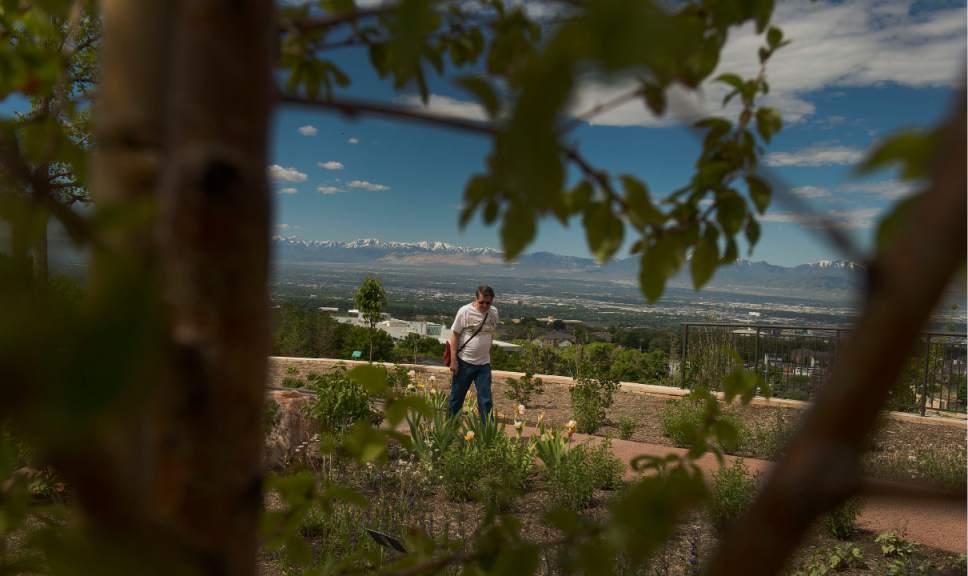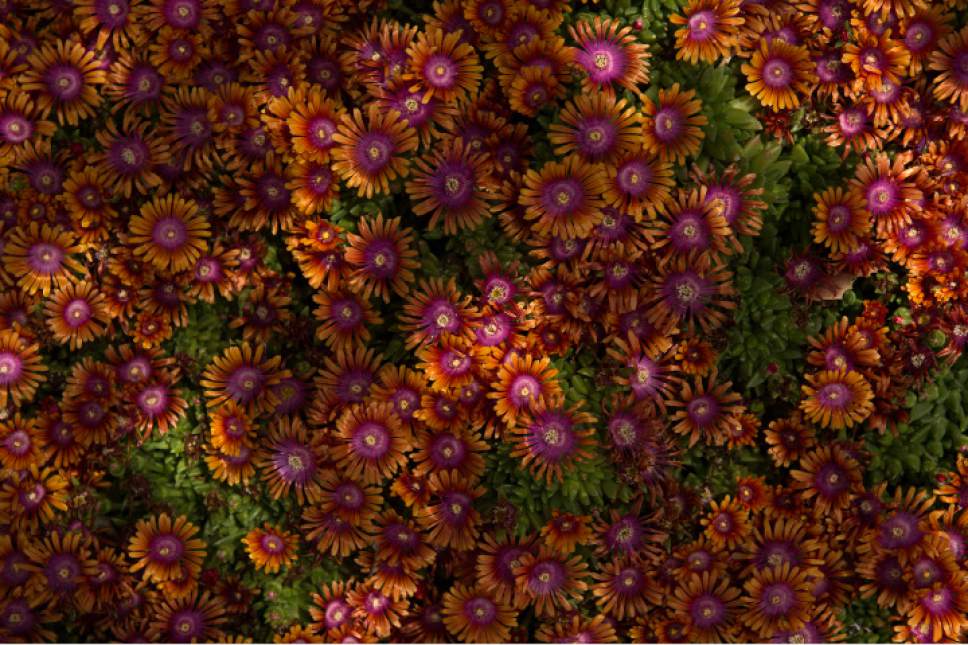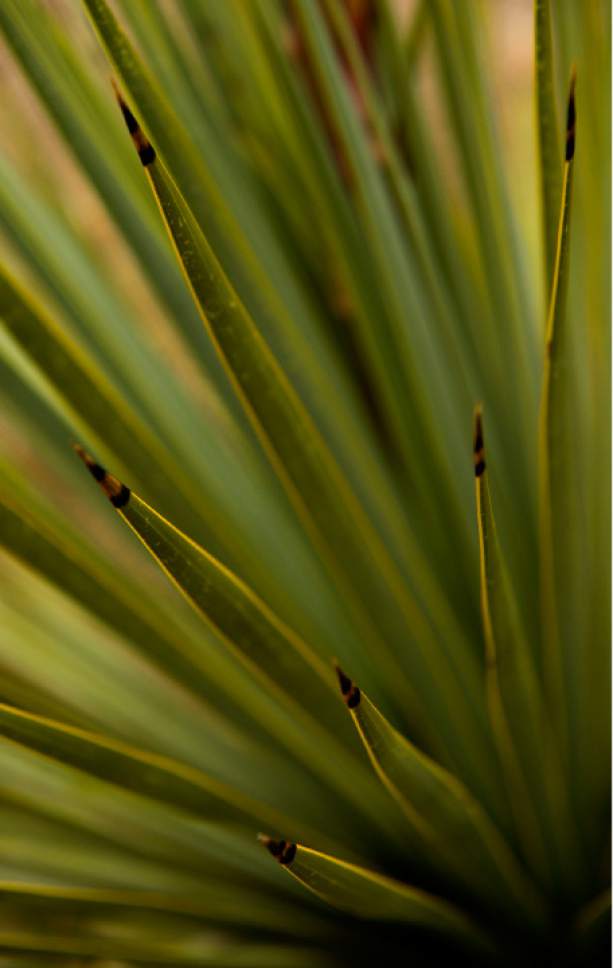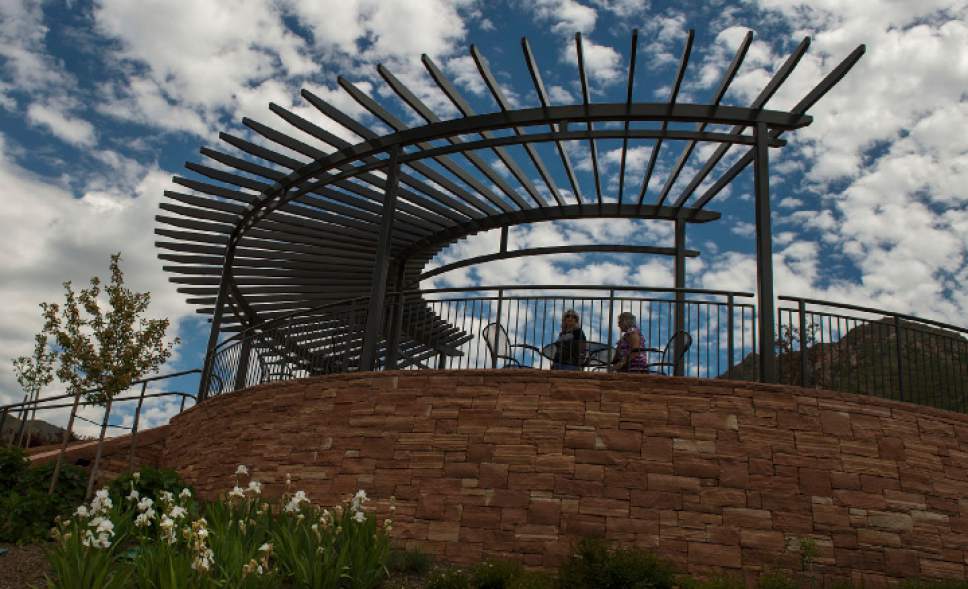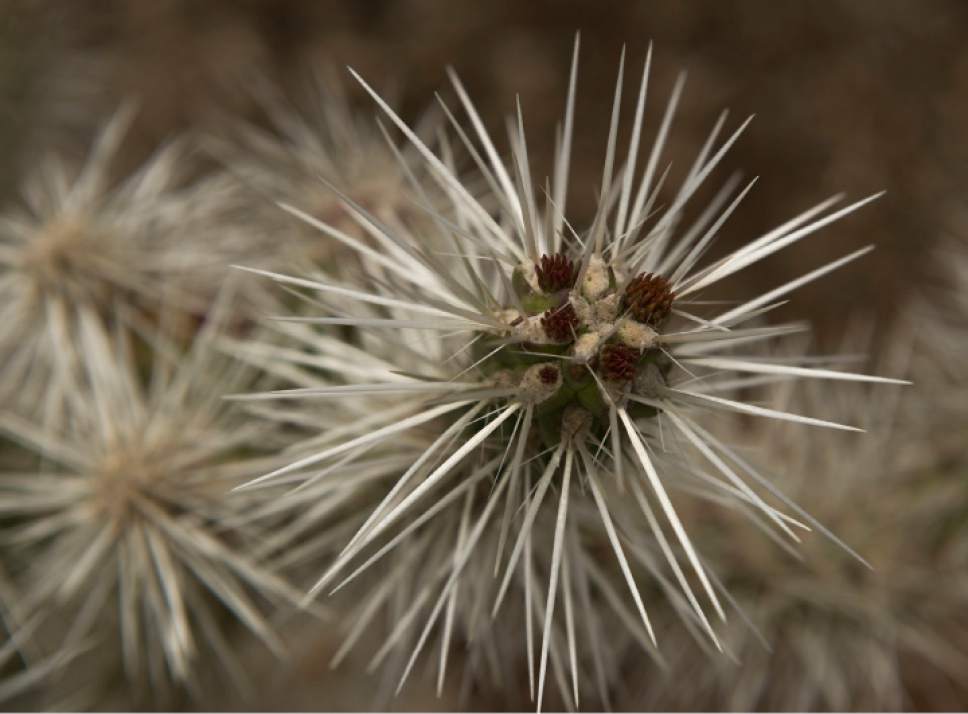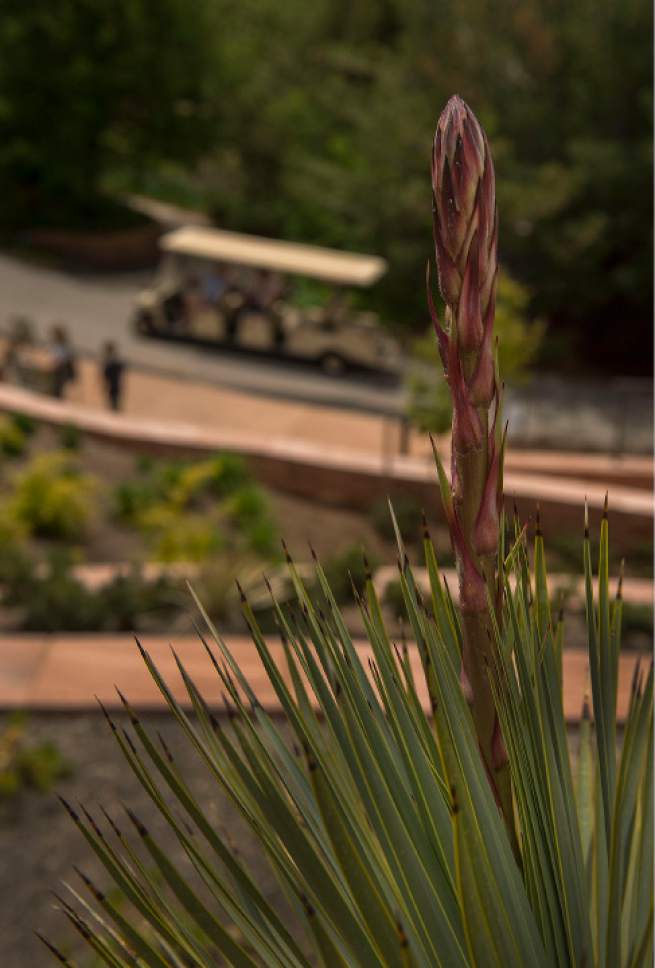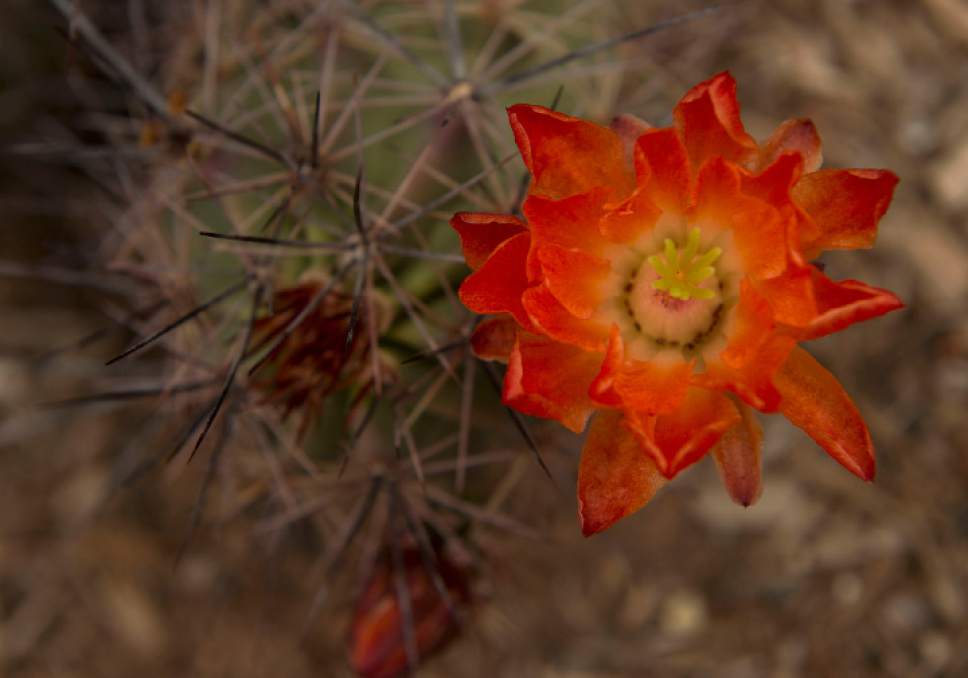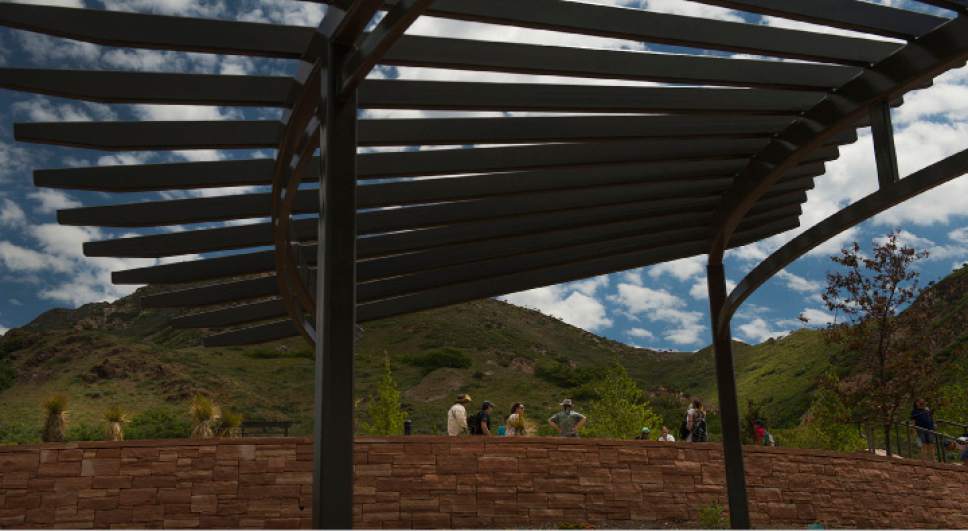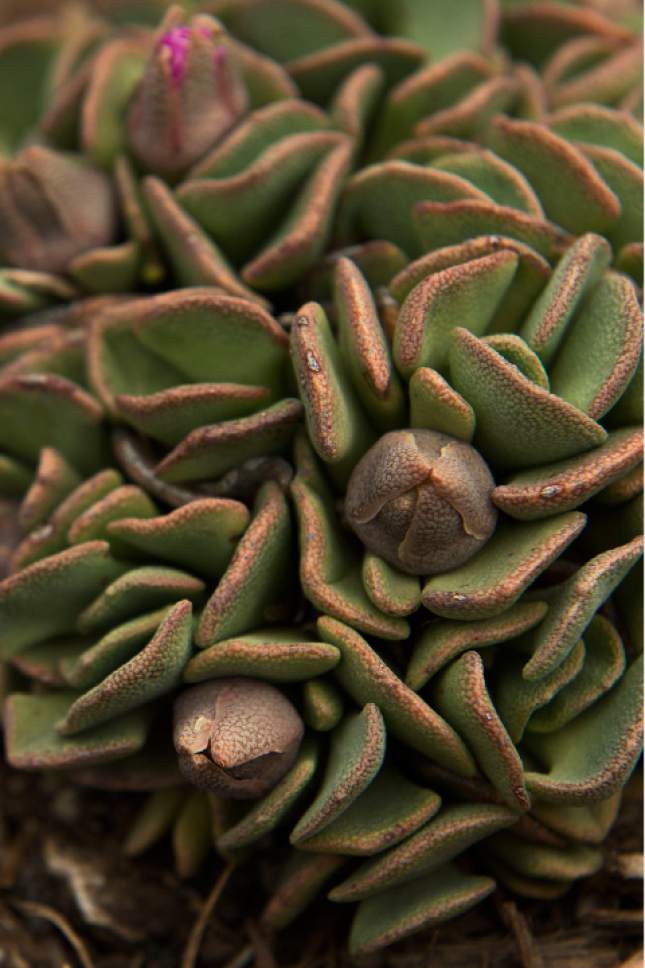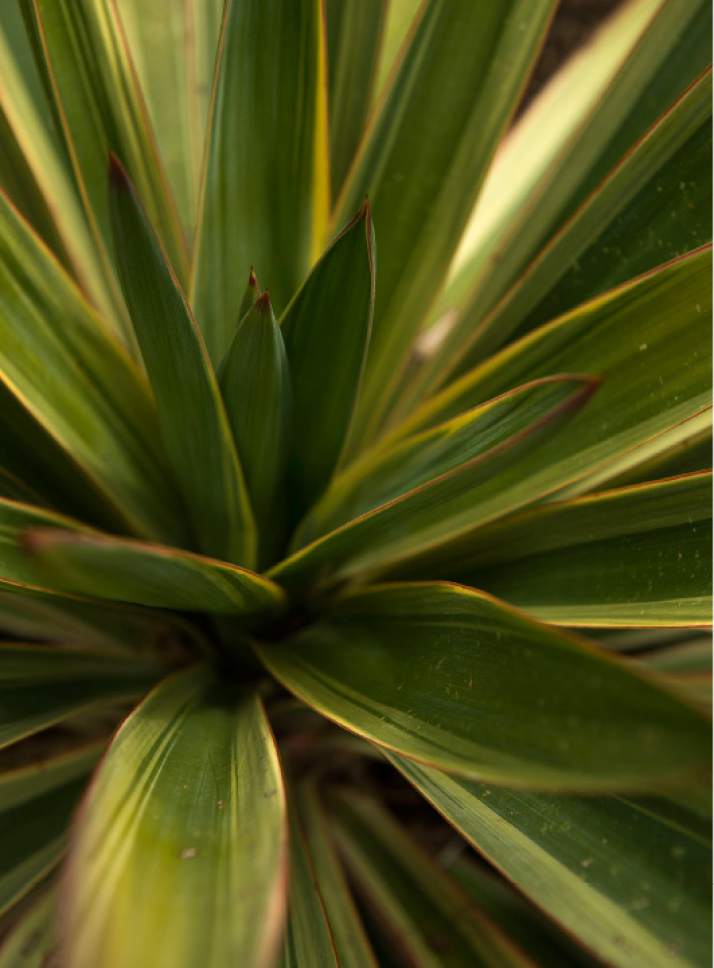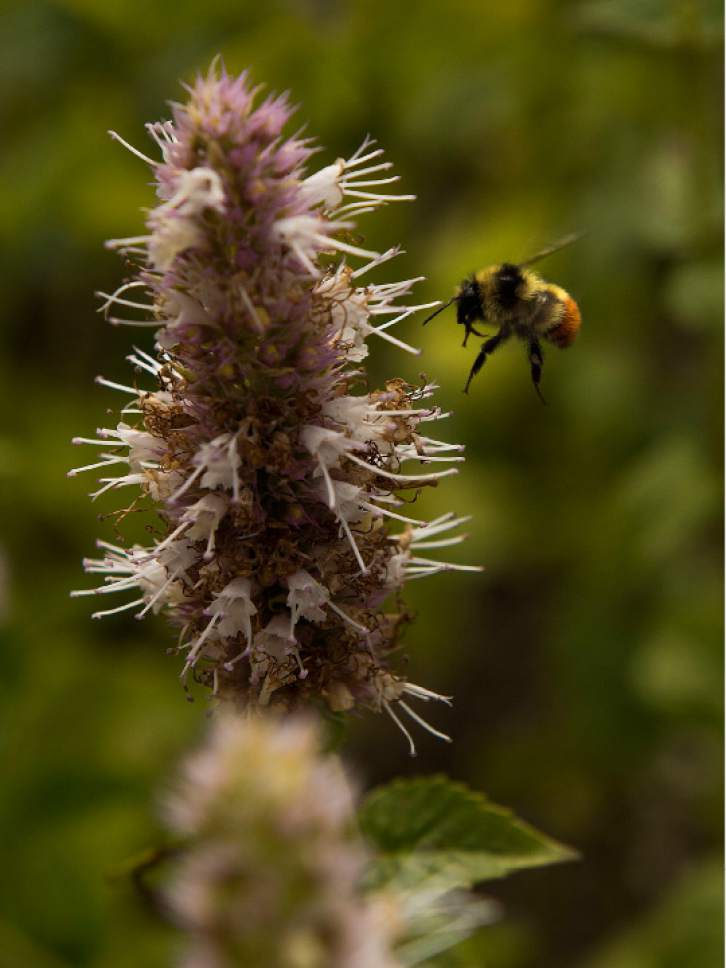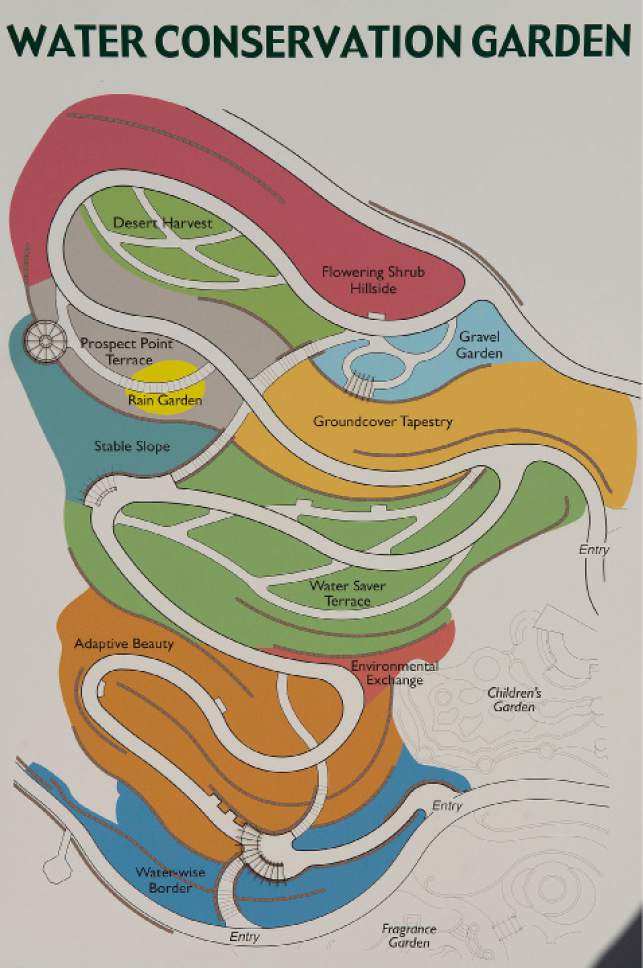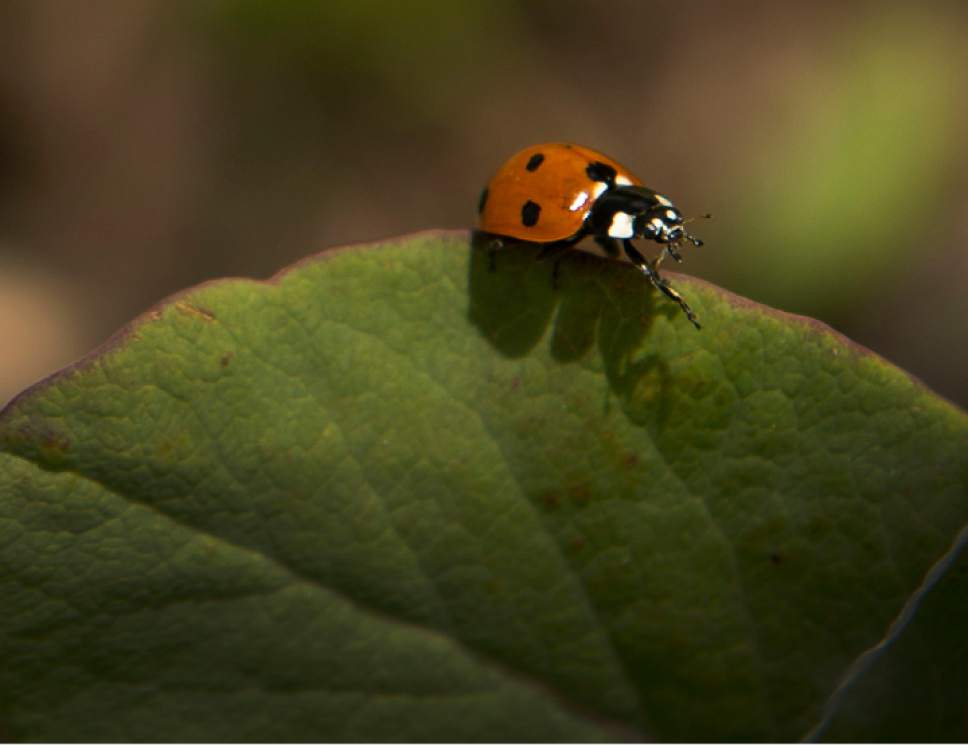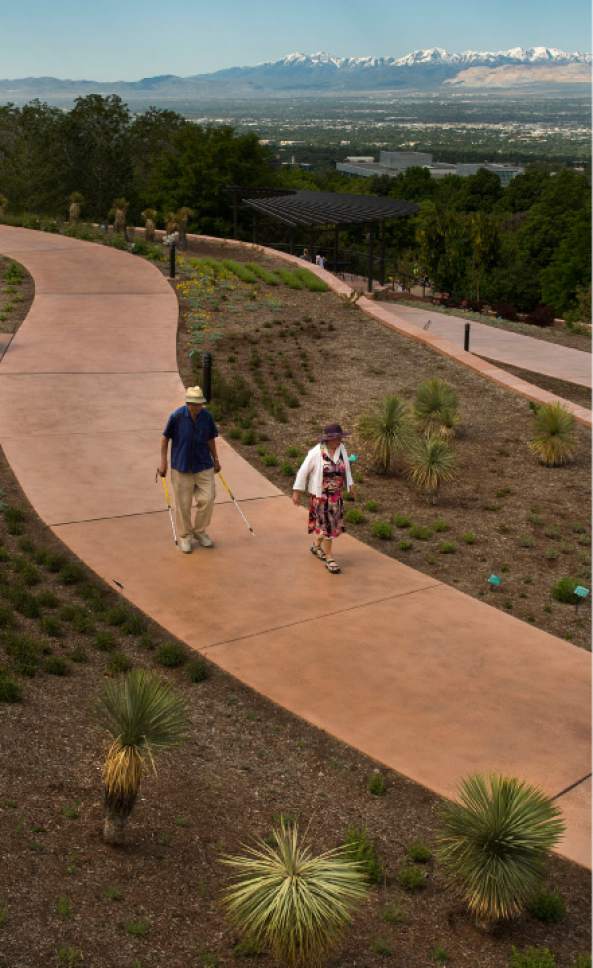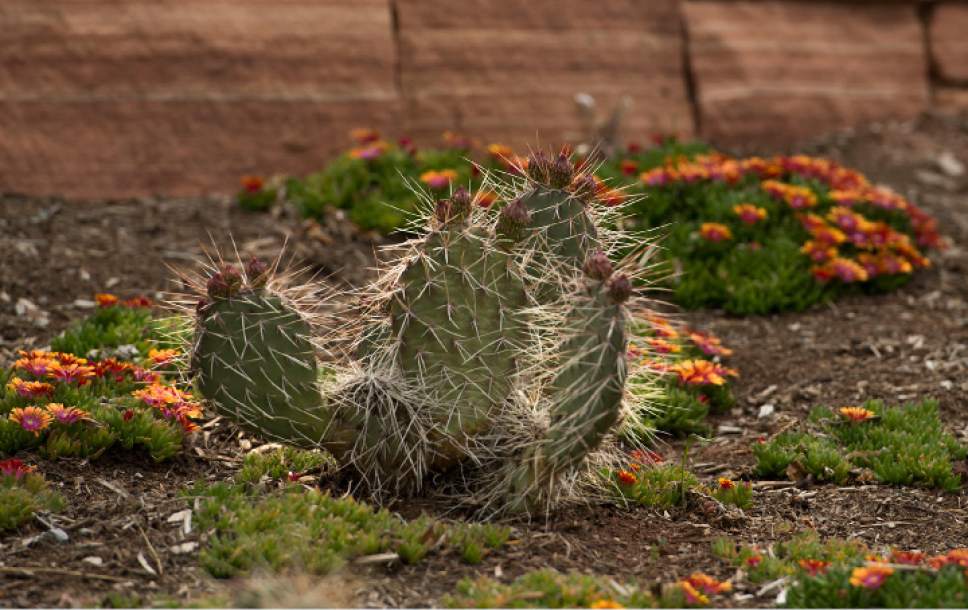This is an archived article that was published on sltrib.com in 2017, and information in the article may be outdated. It is provided only for personal research purposes and may not be reprinted.
Think of Red Butte's new Water Conservation Garden as a giant, interactive board game similar to Chutes and Ladders, perched on a hillside with gently winding paths, stone steps and strategically placed pavilions that provide an expansive view of the Salt Lake Valley.
On a recent morning, couples meandered along the walkways and mothers pushed babies in strollers while children danced, skipped and sprinted past. All were compelled to stop like game pieces at various points to admire the vibrant fuschia flowers of an ice plant or the spiky, spiderlike leaves of the variegated mound lily.
Part garden, part outdoor adventure, part educational classroom, the Water Conservation Garden, which opened May 20, covers 3 acres at the uppermost point of Red Butte Garden, making it the venue's largest formal garden, said executive director Greg Lee.
More than 29,000 native, drought-tolerant and water-wise plants — some 350 species — are arranged in 10 themed areas or "rooms" that collectively convey one simple message: Skimping on water does not mean skimping on beauty.
"We don't want to guilt people into using these plants," Lee said. "We want to seduce them into having an absolutely stunning landscape using water-wise plants."
Lectures, courses and garden tours are in the works so people can learn how to create water-wise landscapes at home.
Lee said the garden has been part of Red Butte's master plan for nearly a decade and cost about $6 million, paid for through private donations and grants.
While the garden sits on a steep slope, the pathways were built with a gentle 5 percent grade, making it ADA accessible and a great place for young and old to enjoy the outdoors just a few minutes from downtown. The garden also provides access to hiking trails for those who want something more strenuous. (The new garden is included in Red Butte admission; see http://www.redbuttegarden.org for details.)
Kirtly Jones and Donna Mirabelli were among the first to visit the new garden last week. They were impressed by the design, with its red-stone walls and staircases, as well as the plants.
"It honors Utah's landscapes in a really beautiful way," said Jones. "And it will have fantastic views at sunset."
Utah already has four similar conservation gardens in West Jordan, Kaysville, Ogden and St. George. But Red Butte Garden is the most visually stunning, especially when the many young seedlings reach maturity in three to five years, Lee said, adding that Utah's conservation gardens complement each other. And in the second-driest state in the nation — behind Nevada — there's room for many more.
"We really need examples of wise gardening in every corner of the valley," he said. "We need a communitywide effort to change the culture of landscaping."
Utah averages only 13 inches of precipitation per year, but residents consume more water per capita because they enjoy having lush green lawns that require regular watering.
As Utah's population continues to grow, water resources will become scarce and homeowners will need to find landscape alternatives. Many people assume that means they will have to give up beauty for "cactus and gravel," said Marita Tewes Tyrolt, Red Butte's director of horticulture. It's really about "incorporating water-wise plants and proper irrigation."
The Water Conservation Garden's 10 themed areas demonstrate that "one size does not fit all," she said. And depending on the landscape, "there are so many options and people can be creative."
At the entrance of the Water Conservation Garden — adjacent to the Children's Garden and east of the Fragrance Garden — guests are greeted by the Water-Wise Border, a classic English border using water-wise plants.
As guests move up the hill, they will find nine more unique growing zones:
Adaptive beauty • Hardy plants from around the world.
Environmental exchange • Water-wise alternatives to frequently used water-consumptive plants.
Stable slope • Deciduous and evergreen species with extensive roots that anchor the steep slope and prevent erosion.
Water-saver terrace • The largest planted terrace features five zones, each with independent watering schedules, from plants that need to be watered once every 4-5 days to those that require no supplemental irrigation.
Ground-cover tapestry • A sloped garden with ground-cover possibilities.
Rain garden at Prospect Point • In this area, where much of the garden's storm-water drainage accumulates, plants can withstand short periods of water inundation and prolonged periods of dryness.
Desert harvest • Vegetables, fruits and herbs for dry-land climates.
Gravel garden • Resilient, drought-hardy plants with ornamental characteristics.
Flowering shrub hillside • The uppermost region highlights resource-conserving shrubs.
Five places to find water-wise wisdom
Utah has five gardens and arboretums where residents can get outdoors, as well as find information about low-water landscaping and water-wise plants.
Conservation Garden Park • 8275 S. 1300 West, West Jordan; 801-256-4400 or conservationgardenpark.org. Open Monday-Saturday, 8 a.m. to 8 p.m.
Ogden Botanical Gardens • 1750 Monroe Blvd., Ogden; 801-399-8080 or ogdenbotanicalgardens.org. Open daily, 9 a.m. to 7 p.m.
Red Butte Garden • 300 Wakara Way, on University of Utah campus; 801-585-0556 or http://www.redbuttegarden.org. Open daily, 9 a.m. to 9 p.m.
Red Hills Desert Garden • 375 E. Red Hills Parkway, St. George; 435-673-3617 or redhillsdesertgarden.com. Open daily, sunrise to sunset.
Utah State University Botanical Center • 920 S. 50 West, Kaysville; 801-593-8969 or usubotanicalcenter.org. Open Monday-Friday, 1 to 5 p.m., and Saturday, 10 a.m.-2 p.m. Ponds, trails and outdoor spaces open daily sunrise to sunset.


